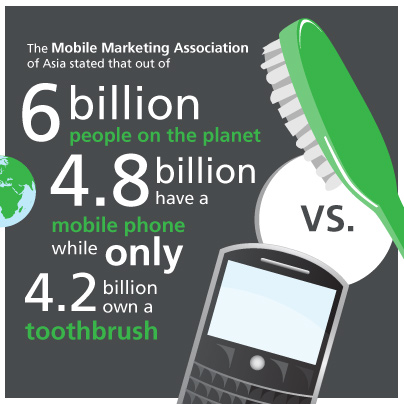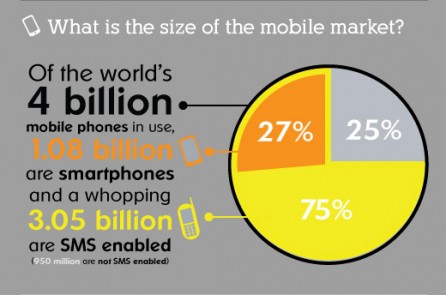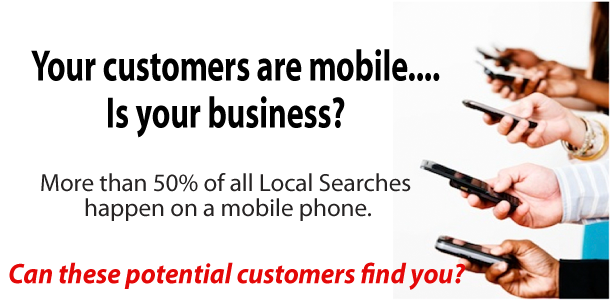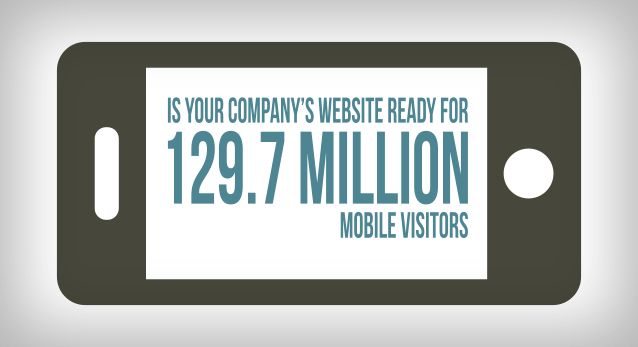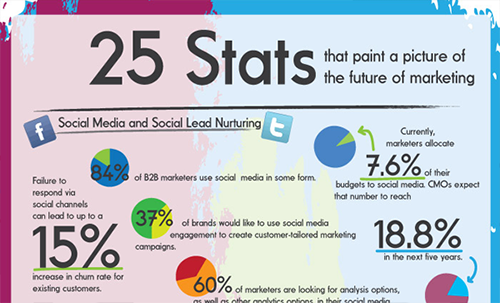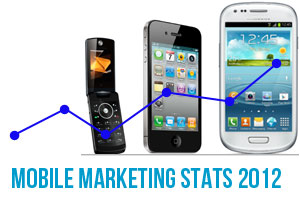


How many of you have a Facebook or Twitter account? How many of you access that account from a device other than a PC? If you do, are you using your smartphone or tablet? If so, you are considered “part of the norm.” Over two thirds of facebook and twitter traffic already comes from mobile devices. Most of you are probably reading this blog post from a mobile device.
We’ve officially entered a world where having a PC is no longer part of the norm. We can access the web from almost any handheld device and from almost any part of the world. Mobile is no longer a “wanted” support medium, it’s now a necessity. Mobile has became the GO TO medium of today’s world. 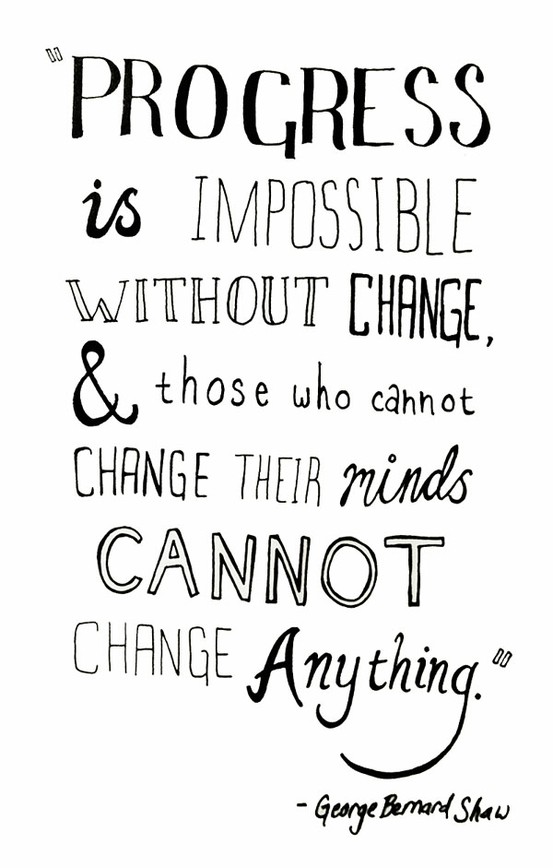
With the ever so rising demand of mobile technology, we as humans must adjust to the fundemental shift that comes along with it. We must make and take new innovative approaches to understand and adapt to the new uses. North Social states, “without your brand promotions being accessible from any device (smartphone, tablet, or PC) you’re failing to reach 60-70% of just your social media users.”
If companies don’t adjust and accomodate a mobile strategic plan into their business plan now, then they are failing with the mobile wave opportunity. Consumers who are not happy or do not have a great experience with an accessible and well thoughout mobile site will bail and head straight to your competitor giving them the edge over you. Companies can no longer go without having a mobile plan in place, it’s now essential to succeed.
Have I convinced you mobile is the way to go? Have you realized mobile is here and its here to stay? If not, I understand. Here are 8 more reasons why marketers must add mobile to their strategy in 2013.
1. Accessibility = Intreaction
The average American spends 94 minutes per day using mobile applications versus the 72 minutes of web-based consumption. The number is growing rapidly, while the percentage of web traffic in the United States is 7.96% that number skyrockets in Asia where the web traffic there is at 17.84%. Many have stated it’s only a matter of time before mobile usage surpasses television as the go to access point for media and I mean ALL media. Most consumers access Facebook, Twitter and LinkedIn through a mobile device.
2. Statistics can prove anything – even the truth.
Just like in the business world, where numbers are key. The same goes for the communication world. We thrive off numbers and statistics.
- There are over 1.2 Billion people accessing the web from their mobiles
- 1.08 of the world’s 4 billion mobile phones are smartphones
- 91% of all smartphone users have their phone within arm’s reach 24 hours a day 7 days a week.
- 60% of Facebook’s 1 billion users access Facebook through a mobile device. These people are twice as active on the social media site than those who do not have mobile access.
- Facebook has 543 million monthly active users on mobile
- By 2016 mobile marketing will account for more than 15.2% of global online ad spending.
3. Maturity takes time
Imagine putting together a fundraiser. You just throw your fundraiser out there and nobody shows up. You put the whole thing together but forgot one crucial step. Promoting and awareness. Same thing with brand promotions. You cannot just create a brand and toss it out in to the world and hope people visit. You have to plan and campaign your brand. Promote it and get people aware of what you are all about.
The good thing about this is that the mobile ad market it no longer “immature.” There is such a large inventory out there of the tools companies have access too. They are able to target and connect their messages to their consumers this way. For example, Facebook. This company has gone all in. They put all their eggs in one basket and it has paid off. In 2011 Facebook had a big goose egg on the board in the mobile ad revenue area. Where in 2013 they’re expected to pull in an outstanding $850 million for mobile ads.
4. So, Lo, Mo – Repeat it till you remember it.
Social, Local, Mobile. Remember social is mobile, local is mobile, mobile is social and local. As stated earlier, 60% of Facebook traffic is mobile and growing rapidly. Then we have twitter where most of their user base is mobile. Throw in Foursquare where the location-based service allows users to inform friends where they’re eating, drinking or gathering at right now – this confirms that mobile and social make great partners. Social media has the power to bring people all over the world together.
5. Flow Easily
Have you ever woke up at dawn to go skiing out on the lake, when its the most calm almost and has a glassy like look to it. It’s the best time to go skiing, right? That’s what you want it to be like when you launch a promotion. If it goes smooth and easy most likely it will be successful. You never want to go skiing on memorial day weekend at two in the afternoon. The more waves you hit the more likely you are to fall. Same goes for promotions. The more hoops you have to jump through in order to participate in a brand experience the more likely you are to fail.
So what about QR Codes (aka Quick Response Codes). These are nauseating just like the your fathers flag shirt that he wore in the 70’s. (Every dad is entitled to one ugly shirt though.) Any person in the communication sphere especially brand marketers need a reality check when it comes to QR Codes. It may look good but it’s not inviting to a perspective client whatsoever.
6. Rapid Response, Rapid Reward
I’m like a little kid when it comes to prizes in cereal boxes and Cracker Jacks. I just want to know right away what the special prize is. Smart mobile apps allow you (the business) to collect data from your consumer and turn around and hit your customer with rapid response emails. These emails can include coupons, lines, certificates and more. The way business play the distribute and redeem game has changed, because our consumer behavior has changed. All because of mobile. Statistics show mobile coupons are ten times more likely to be redeemed than traditional coupons.
7. Why is a Smartphone called a Smartphone?
I often find myself asking this question a lot and no it’s not because I’m a blonde. I often wonder how many things get their names. The reason a smartphone is called a smartphone is because it is the “brain” of you as the customer. We use mobile phones for essentially everything. Whether it be entertainment, exercise to even googling ptential purchases. North Social states, “71% of mobile consumer do research on their smartphones after being served a captivating television or mobile ad? … while more than 59% of B2B purchase decision makers and influencers turn to their smartphones to gather intel when purchasing products or services.”
8. There is no failure, only feedback
To be successful you want and need to know how your consumer likes your product. Brands are constantly in communication with their consumers picking their brains to find out exactly what they want and how they can improve their business. To get a large ROI from your consumer you must partake in certain initiatives.

- Properly incent them
- Quick and convient feedback
- Understand your target
- Measure customer awareness
- Learn more about the customer and their specific buying habit
Inorder for a customer to get a discount on a future purchase, ask them to give you instant feedback. I quarantee it will outpreform a traditional survey via email every time.
Have I convinced you now? Good. I hope so. If your a little worried about being jumping into the mobile world, dont worry. It’s always good to be late then never there. Just follow the steps and slowly ease your way in. I promise you, you will be glad you did it.

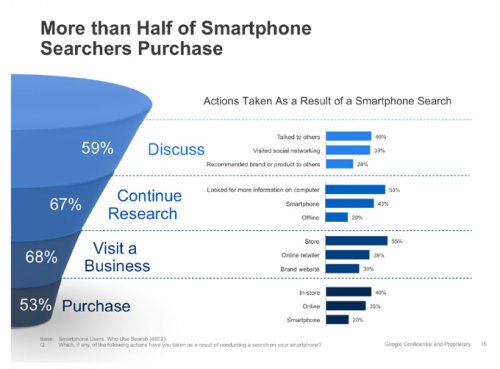 f all adults in the U.S. now own smartphones, it is no surprise that marketers are seeing the vast possibilities that mobile marketing has to offer and want to take
f all adults in the U.S. now own smartphones, it is no surprise that marketers are seeing the vast possibilities that mobile marketing has to offer and want to take





